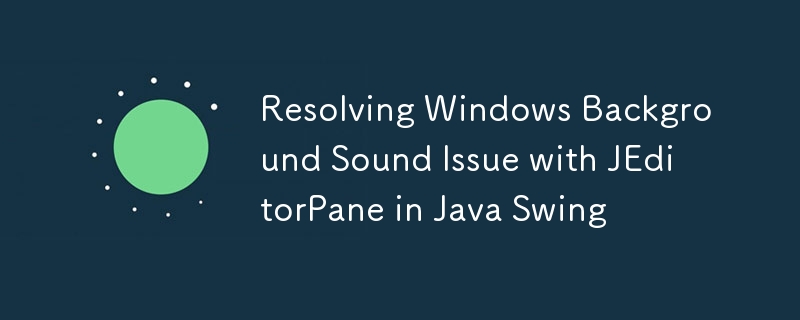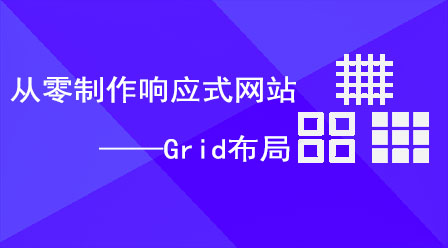JavaSwingJEditorPane背景音效解决方法
时间:2025-07-13 09:24:32 151浏览 收藏
大家好,今天本人给大家带来文章《解决Java Swing中JEditorPane背景声音问题》,文中内容主要涉及到,如果你对文章方面的知识点感兴趣,那就请各位朋友继续看下去吧~希望能真正帮到你们,谢谢!

This tutorial addresses an issue where pressing the Enter key within a non-editable JEditorPane in Java Swing triggers the Windows background sound. The solution involves removing the default action associated with the Enter key, preventing the unwanted sound while preserving the functionality of custom key listeners.
When working with JEditorPane in Java Swing, you might encounter an unexpected behavior: pressing the Enter key triggers the default Windows notification sound. This occurs specifically when the JEditorPane is set to non-editable mode (htmlLabel.setEditable(false)). This behavior is due to the default action associated with the Enter key within the JEditorPane's input map. Let's explore how to resolve this issue.
Understanding the Problem
The JEditorPane component in Swing maps specific keystrokes to actions. In the case of the Enter key, a default action (javax.swing.text.StyledEditorKit.StyledInsertBreakAction) is triggered. This action, when executed on a non-editable JEditorPane, results in the operating system's default error feedback, which manifests as the Windows notification sound.
Solution: Removing the Default Action
The most straightforward solution is to remove the default action associated with the Enter key. This can be achieved by manipulating the JEditorPane's input map.
htmlLabel.getInputMap().put(KeyStroke.getKeyStroke("pressed ENTER"), "none");This line of code effectively removes the action associated with the "pressed ENTER" keystroke, preventing the default behavior and thus eliminating the unwanted sound.
Complete Code Example
Here's a complete, runnable example demonstrating the solution:
import java.awt.Color;
import java.awt.Dimension;
import java.awt.Font;
import java.awt.event.KeyEvent;
import java.awt.event.KeyListener;
import javax.swing.JEditorPane;
import javax.swing.JFrame;
import javax.swing.KeyStroke;
public class App {
public static void main(String[] args) {
Dimension frameDimension = new Dimension(600, 400);
JFrame frame = new JFrame();
frame.setDefaultCloseOperation(JFrame.EXIT_ON_CLOSE);
frame.setMinimumSize(frameDimension);
frame.setSize(frameDimension);
frame.setBackground(Color.white);
// Create HTML Editor Pane
JEditorPane htmlLabel = new JEditorPane("text/html", "");
htmlLabel.getInputMap().put(KeyStroke.getKeyStroke("pressed ENTER"), "none");
htmlLabel.setEditable(false);
htmlLabel.setBackground(Color.WHITE);
htmlLabel.setFont(new Font(htmlLabel.getName(), Font.PLAIN, 14));
htmlLabel.setVisible(true);
// IF I KEEP THIS LINE,
// I will hear a "Windows Notification Sound"
// whenever I press ENTER
frame.add(htmlLabel);
// I don't want the sound but I want this pane
htmlLabel.addKeyListener(new KeyListener() {
@Override
public void keyTyped(KeyEvent e) {
}
@Override
public void keyPressed(KeyEvent e) {
// If Enter is pressed
if (e.getKeyCode() == 10) {
// DO STUFF
System.out.println("ENTER");
}
}
@Override
public void keyReleased(KeyEvent e) {
}
});
frame.setResizable(false);
frame.setVisible(true);
}
}Important Considerations
Custom Key Listeners: Removing the default action does not interfere with custom KeyListener implementations. Your keyPressed method will still be invoked when the Enter key is pressed, allowing you to implement your desired functionality.
Alternative: Custom Action: Instead of removing the default action, you could create a custom Action and associate it with the Enter key. This approach provides more control over the behavior but is generally more complex than simply removing the existing action.
Swing Key Bindings: The Oracle Java tutorials on How to Use Editor Panes and Text Panes and How to Use Key Bindings provide valuable information on working with these components.
Conclusion
By removing the default action associated with the Enter key in a non-editable JEditorPane, you can effectively prevent the unwanted Windows notification sound while preserving the functionality of your custom key listeners. This solution provides a clean and efficient way to address this specific issue in Java Swing applications.
到这里,我们也就讲完了《JavaSwingJEditorPane背景音效解决方法》的内容了。个人认为,基础知识的学习和巩固,是为了更好的将其运用到项目中,欢迎关注golang学习网公众号,带你了解更多关于的知识点!
-
501 收藏
-
501 收藏
-
501 收藏
-
501 收藏
-
501 收藏
-
409 收藏
-
386 收藏
-
495 收藏
-
127 收藏
-
104 收藏
-
292 收藏
-
217 收藏
-
161 收藏
-
221 收藏
-
100 收藏
-
391 收藏
-
490 收藏
-

- 前端进阶之JavaScript设计模式
- 设计模式是开发人员在软件开发过程中面临一般问题时的解决方案,代表了最佳的实践。本课程的主打内容包括JS常见设计模式以及具体应用场景,打造一站式知识长龙服务,适合有JS基础的同学学习。
- 立即学习 543次学习
-

- GO语言核心编程课程
- 本课程采用真实案例,全面具体可落地,从理论到实践,一步一步将GO核心编程技术、编程思想、底层实现融会贯通,使学习者贴近时代脉搏,做IT互联网时代的弄潮儿。
- 立即学习 516次学习
-

- 简单聊聊mysql8与网络通信
- 如有问题加微信:Le-studyg;在课程中,我们将首先介绍MySQL8的新特性,包括性能优化、安全增强、新数据类型等,帮助学生快速熟悉MySQL8的最新功能。接着,我们将深入解析MySQL的网络通信机制,包括协议、连接管理、数据传输等,让
- 立即学习 500次学习
-

- JavaScript正则表达式基础与实战
- 在任何一门编程语言中,正则表达式,都是一项重要的知识,它提供了高效的字符串匹配与捕获机制,可以极大的简化程序设计。
- 立即学习 487次学习
-

- 从零制作响应式网站—Grid布局
- 本系列教程将展示从零制作一个假想的网络科技公司官网,分为导航,轮播,关于我们,成功案例,服务流程,团队介绍,数据部分,公司动态,底部信息等内容区块。网站整体采用CSSGrid布局,支持响应式,有流畅过渡和展现动画。
- 立即学习 485次学习
